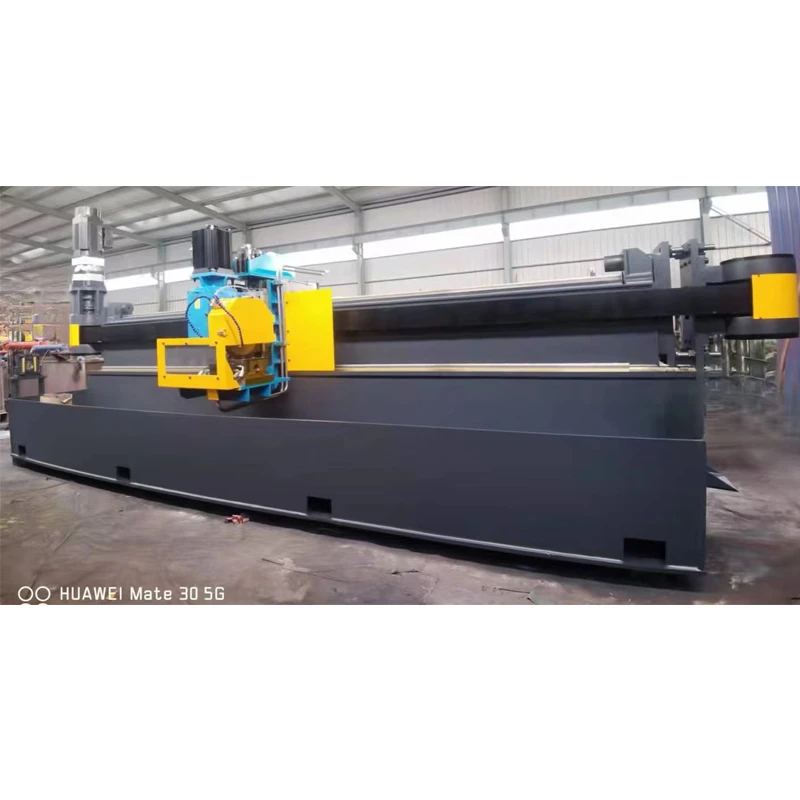plate straightening machine
The Importance of Plate Straightening Machines in Modern Manufacturing
In today's fast-paced manufacturing environment, precision and efficiency are paramount. One of the unsung heroes in the realm of metal fabrication is the plate straightening machine. These specialized machines play a critical role in ensuring that metal plates used in various industries are flat, uniform, and free from distortion.
Understanding Plate Straightening Machines
Plate straightening machines, often referred to as flattening machines or leveling machines, are designed to correct the warpage and curvature that can occur during the production process of metal sheets. This warping can arise from various sources, including welding, thermal expansion, cutting, and machining. When a metal plate is not flat, it can lead to significant challenges in further processing, such as welding, painting, and assembly.
The primary function of a plate straightening machine is to apply a controlled force to specific areas of the plate, thereby redistributing the stresses within the material. This process ensures that the plate achieves the desired flatness and structural integrity. Many modern plate straightening machines are equipped with advanced technologies, such as hydraulic systems and automated controls, which increase their efficiency and precision.
Applications Across Industries
Plate straightening machines are used across a wide range of industries, including automotive, aerospace, construction, and shipbuilding. In the automotive industry, for instance, ensuring that components fit together perfectly is crucial for vehicle safety and performance. By using a plate straightening machine, manufacturers can maintain high standards of quality control, ensuring that every part meets the specifications required for assembly.
In aerospace manufacturing, where the tolerance levels are exceptionally tight, the ability to produce perfectly flat and stress-free plates is vital. A minor imperfection can have catastrophic consequences, making plate straightening machines indispensable in this sector as well.
plate straightening machine

Construction applications benefit from these machines by ensuring that steel plates used in structural applications are flat, allowing for better load-bearing capabilities and durability. The shipbuilding industry similarly relies on plate straightening machines to produce the large, flat steel plates necessary for vessel construction, ensuring both safety and performance.
Advancements in Technology
Recent advancements in technology have transformed plate straightening machines, making them more efficient and user-friendly. Modern machines often feature digital displays and computerized operating systems, allowing for precise adjustments to be made quickly and easily. Automated features can also help to reduce operator fatigue and decrease production times.
Additionally, the integration of sensors and feedback systems into plate straightening machines means that manufacturers can monitor the straightening process in real-time. This innovative approach enables operators to make immediate adjustments, ensuring the highest levels of accuracy and quality control.
Conclusion
The role of plate straightening machines in modern metal fabrication cannot be overstated. They are essential for ensuring that metal plates achieve the necessary flatness and structural integrity across various industries. With ongoing technological advancements, these machines are becoming more efficient and precise, further enhancing their utility in manufacturing processes.
As industries continue to evolve and demand higher standards of quality, the importance of specialized equipment like plate straightening machines will only grow. Investing in advanced straightening technology is not just a matter of improving production efficiency; it is also a crucial step toward ensuring safety, reliability, and the overall success of manufacturing operations. In the competitive landscape of metal fabrication, having the right tools—like a reliable plate straightening machine—can make all the difference.
-
High Frequency Straight Seam Welded Pipe Production Line-BzZhou Xinghua Machinery Equipment Manufacturing Co., LTD.|line pipe steel&welded gas pipeNewsJul.30,2025
-
High Frequency Straight Seam Welded Pipe Production Line-BzZhou Xinghua Machinery Equipment Manufacturing Co., LTD.|High Precision&Automated SolutionsNewsJul.30,2025
-
High Frequency Straight Seam Welded Pipe Production Line - BzZhou Xinghua Machinery Equipment Manufacturing Co., Ltd.NewsJul.30,2025
-
High Frequency Straight Seam Welded Pipe Production Line-BzZhou Xinghua Machinery Equipment Manufacturing Co., LTD.|Precision Welding, High EfficiencyNewsJul.30,2025
-
High Frequency Straight Seam Welded Pipe Production Line|BzZhou Xinghua|Precision Welding&EfficiencyNewsJul.30,2025
-
High Frequency Straight Seam Welded Pipe Production Line - BzZhou Xinghua|Precision Engineering&EfficiencyNewsJul.30,2025


